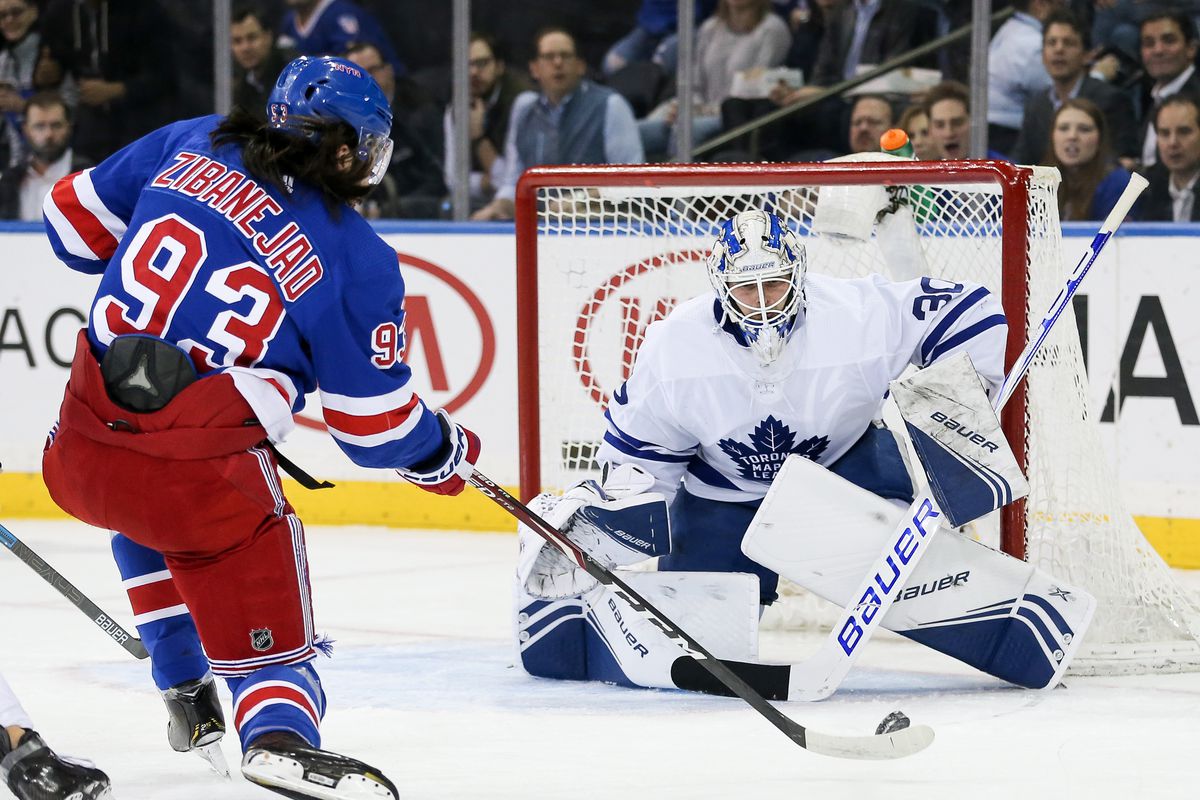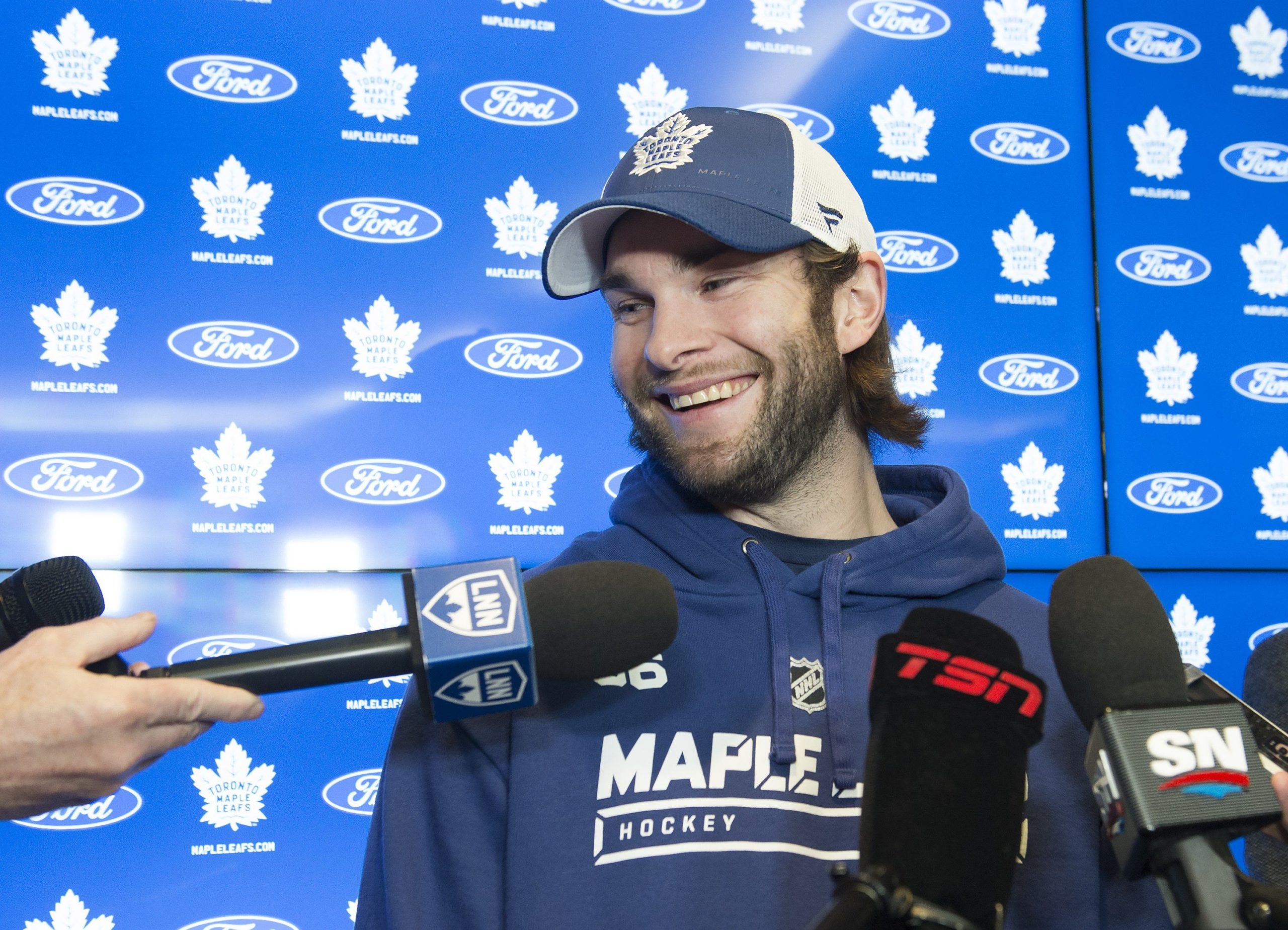After the 2017-18 season, the Toronto Maple Leafs were a young, talented team on the rise.
They had lost out in the first round of the playoffs two years in a row, each time to very good teams (the Washington Capitals and Boston Bruins), and there was a consensus around the hockey world that this was a skilled but young Leafs team that just needed some time to mature.
That summer, they signed John Tavares. It would be dramatic to say everything changed, but the expectations did ratchet up significantly. The team suddenly had a star in his prime surrounded by a collection of elite young talents. They went from a fun but young team to a club expected to win.
But there were still holes on the roster, particularly on defense. Later that season, the team made another big move, this time landing a legitimate top-four defenseman in Jake Muzzin, trading away a first-round draft pick and two prospects in the process.
They were a good team, but they lost out in the first round — again.
The following offseason, the team set out yet again to further improve their defense, parting with their biggest asset — probably since Phil Kessel — in Nazem Kadri to acquire Tyson Barrie and Alexander Kerfoot. It was a move that brought in another top-four defenseman to join Muzzin and Morgan Rielly in the blue line core.
We aren’t here to debate the Barrie trade, but trading a very good, cost-controlled asset for a pending unrestricted free agent defenseman was a clear win-now move. They also packaged their first-round draft pick to move out Patrick Marleau in a separate, cap-clearing move. It marked the second year in a row the Leafs had traded away their first-round pick.
The move made sense, although I personally think that price was too high (there is no real precedent of a GM needing to pay that much to offload one year of a bad contract). But it was clear the Leafs were trying to do everything in their power to add to the team instead of subtracting valuable secondary players in cap-clearing measures (similar to Chicago after it won its Cups).
To make a long story short, the organization has invested a lot into winning this year and has far too much riding on the season to not even qualify for the playoffs. Currently, they are on the outside looking in and Frederik Andersen is injured. The alternative was Michael Hutchinson — who, of 62 goalies to play in at least 10 games this season, is tied for 59th in save percentage. With the season quite literally on the line, that’s obviously not good enough.
There were other clues that there was uncertainty around Hutchinson, too. After the game against Florida in which Andersen fell hurt, Sheldon Keefe was asked if he was comfortable with Hutchinson starting a run of games and responded, “I’m not going to answer hypotheticals tonight.” That was probably an indication that he had next to no confidence in Hutchinson.
TSN’s Ray Ferraro called the Panthers game and noted afterward how dejected the team looked on the bench following the fourth goal scored by Mike Hoffman from behind the net. You can break down the numbers any way you want, but it was clear the team had little confidence in Hutchinson, from the coaching staff on down.
The next game, Hutchinson wore different pads — this is a goalie in his own head.


The Trade
That brings us to Wednesday night’s trade: Trevor Moore, a 2020 third-round draft selection, a conditional third-round draft selection in 2021 that could become a second-rounder in exchange for Jack Campbell and Kyle Clifford.
The thing is Jack Campbell hasn’t been great this season, either. Of those 62 goalies who have played 10 or more games, he ranks 50th in save percentage. At 5v5, he has .915 save percentage, which ranks 42nd of 65 goalies to have played a minimum of 300 minutes this season. Overall, he has been putting together a below-average campaign on a bad Kings team that can’t score.
There are valid reasons for optimism, though. Campbell was legitimately solid over the past two seasons (.928 save percentage over 31 games last year, .924 the year before but in only 5 games; he also had a .912 save percentage in the AHL that season as well). It’s not a lot to go on, but it’s something. Plus, as always, goalies are voodoo. There is at least something there to suggest Campbell could be good and effective, although you can’t possibly feel warm and fuzzy when the goalie acquired midseason isn’t exactly posting a banner year.
The Leafs are also not a team that can afford slightly below-average goaltending. They are ninth in shots against per game and give up the sixth-most goals per game. They are 10th in expected goals against and smack dab in the middle in scoring chance for percentage. This is still very much a team that is happy to trade chances and bet on their scoring talent to win out.
Against the Rangers — on the road, knowing there was a struggling goalie in net — the team did nothing to slow the game down and grind it out defensively. There were a number of giveaways off the rush at the offensive blue line leading to counterattacks and odd-man rushes against. Even league average goaltending probably doesn’t cut it for this team — they are too leaky defensively.
Can Campbell perform above average, especially if it’s required over a stretch of play should Andersen struggle to remain healthy? (Note: Andersen has also been struggling of late himself. Goaltending is a real issue for this team right now).
Andersen not travelling this weekend. Campbell back-to-back is a consideration for TOR
— Elliotte Friedman (@FriedgeHNIC) February 7, 2020
Ultimately, do I think there are better, more accomplished options on the market? Yes. Ryan Miller, for example, would have been a safer and more trustworthy option. Nevertheless, there is a familiarity here between Dubas and Campbell, which is something we’ve seen Dubas lean on repeatedly since becoming Leafs GM.
Early on in Shanahan’s tenure, the Leafs President built a diverse staff with a number of different viewpoints and backgrounds. He was commended for fostering an environment that did not fit the mold of the “old boys club.” To a degree, that is what has happened here over the last year and change — a constant churn of hiring staff members and acquiring players Dubas is familiar with from the Soo. It hasn’t particularly failed him yet – in particular, Rasmus Sandin is looking like a very good draft pick — but it has to be noted, depending on Andersen’s availability, this move for a goalie could make or break their season.
He also acquired Kyle Clifford in the deal, another player Dubas is personally familiar with from his time as a player agent. Clifford is a legitimate fourth liner in the league who can be trusted to take shifts in that role and bring some physicality to a team sorely lacking in it. He’s a different type of player than what the Leafs have up front — a welcome addition — but we’ve also seen this with players on the team before where they play a physical game in isolation and it stifles them. The aforementioned Nazem Kadri is one of them, and Matt Martin was another. They looked like fish out of water more than anything.
It’s still worth a shot, though, as Dubas has to diversify his lineup. Clifford is a 10-20 point player who can crash and bang and is a willing combatant (though not a particularly good fighter, for the record). It would be more ideal if he had a running mate to ride shotgun with on this team, but you have to start somewhere.
Conversely, Trevor Moore is a nice player but very similar to what they have throughout the lineup — small, fast, and he has some skill. In a very limited sample size, Moore played to a 26-point pace last season. I think he can be a 30-ish point player who can play both wings and penalty kill. That’s a nice player to have in the depth ranks, but it won’t kill the Leafs to lose this asset. If they receive solid goaltending from Campbell this season alone and make the playoffs, it’s well worth it.
The picks traded are nothing to sneeze at, either. The Leafs have had success signing young undrafted players – Trevor Moore included – and that is going to have to continue. They are maxed out against the cap with a number of big contracts on the books, and they have been trading away lottery tickets that can garner cheap talent nonstop over the past two seasons. It will either catch up to them or they will need to hit on later-round picks and/or continue to uncover the Ilya Mikheyev’s of the world. A team needs depth in this league, and while the Leafs have the right development system to work through this, the constant trading away of draft picks has to be recognized here (the Pat Quinn era says hi).
Similar to the Tyson Barrie trade, this deal is clear in its logic, but there is a bit of a leap of faith happening here in Campbell. The price is maybe a tad high for a backup goalie that doesn’t have a major track record along with a fourth-liner who is a pending unrestricted free agent, but something needed to happen. If the Leafs are honest, there is still probably another move or two they will need to make to gear up for a final playoff push and hopefully, a playoff run. Why stop here?






























![New Leaf Anthony Stolarz on the opportunity in Toronto: “In Florida, I knew my role as a backup… Now, [Joseph Woll] and I are competing for starts… As a goalie, that’s all you can ask for” Anthony Stolarz, Stanley Cup win, now Maple Leaf](https://mapleleafshotstove.com/wp-content/uploads/2024/07/anthony-stolarz-sc-100x70.jpg)
